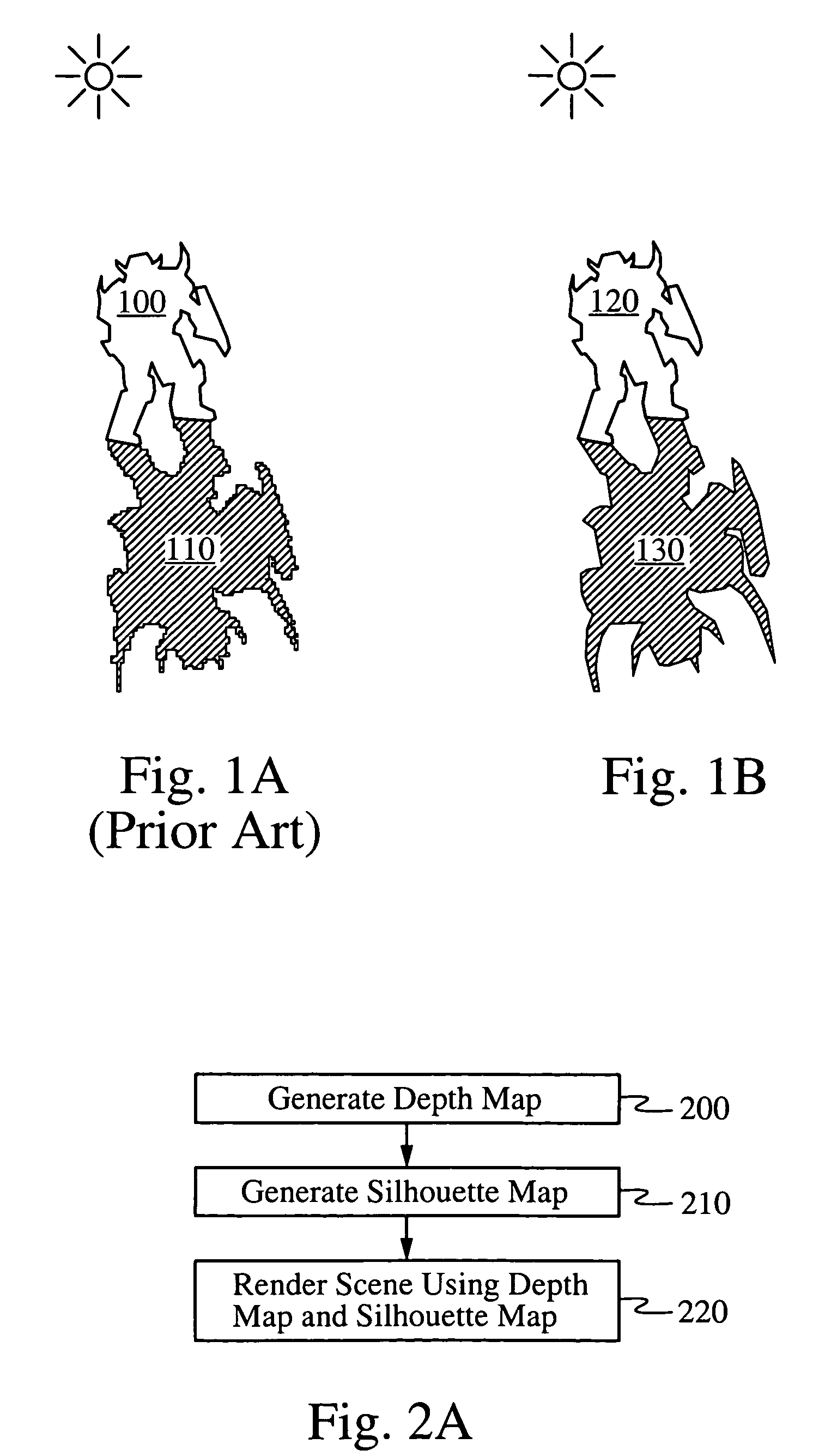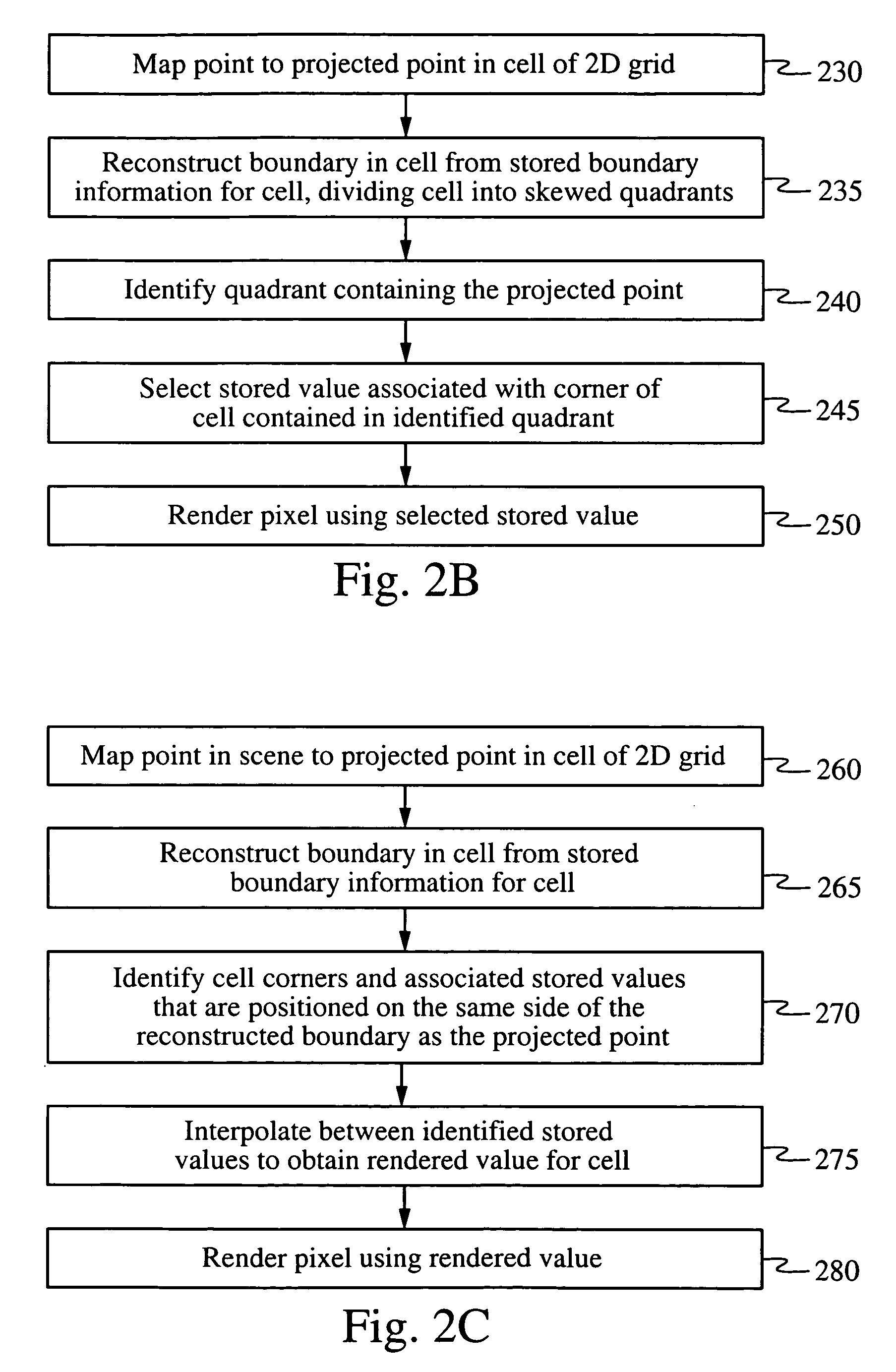Computer graphics rendering using boundary information
- Summary
- Abstract
- Description
- Claims
- Application Information
AI Technical Summary
Benefits of technology
Problems solved by technology
Method used
Image
Examples
Embodiment Construction
The techniques of the present invention, like other graphical rendering techniques, may be implemented in a variety of ways, as is well known in the art. For example, they may be implemented in hardware, firmware, software, or any combination of the three. To give just one concrete example, the technique may be implemented on the ATI Radeon 9700. Pro using ARB_vertex_program and ARB_fragment_program shaders. It is an advantage of the present invention that the rendering techniques may be efficiently implemented in current graphics hardware. In addition, they have constant time and bounded complexity.
Those skilled in the art of computer graphics will appreciate from the present description that the techniques of the present invention have many possible implementations and embodiments. Several specific embodiments will now be described in detail to illustrate the principles of the invention. First, we will describe embodiments related to shadow rendering, followed by embodiments re...
PUM
 Login to View More
Login to View More Abstract
Description
Claims
Application Information
 Login to View More
Login to View More - R&D
- Intellectual Property
- Life Sciences
- Materials
- Tech Scout
- Unparalleled Data Quality
- Higher Quality Content
- 60% Fewer Hallucinations
Browse by: Latest US Patents, China's latest patents, Technical Efficacy Thesaurus, Application Domain, Technology Topic, Popular Technical Reports.
© 2025 PatSnap. All rights reserved.Legal|Privacy policy|Modern Slavery Act Transparency Statement|Sitemap|About US| Contact US: help@patsnap.com



